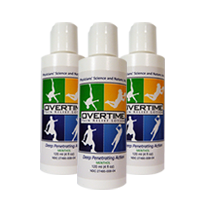Nerve Pain Relief
What is nerve pain?
Nerve pain, known as neuropathic pain, includes a range of medical conditions that affect nerves of the central nervous system (the brain or spinal cord), nerves that travel into the body (peripheral nerves), or nerves of the involuntary nervous system (autonomic nervous system, including sympathetic nerves).
The nervous system is roughly divided between the somatic (or voluntary) system and the sympathetic (or involuntary) system. The somatic nervous system is generally responsible for sensation and muscle activity while the sympathetic nervous system is activated involuntarily, usually in response to changes in the environment to protect the body. Sympathetic nerves do not usually carry pain messages but may be recruited in certain injuries.
Neuropathic pain affects over 4 million Americans as is typically broken down into categories:
- Peripheral Neuropathy is nerve pain cause by abnormalities of the brain or spinal cord. Pain and numbness typically travels along the course of the nerve and into the areas the nerves run, usually limited to one side of the body. Symptoms are wide and varied and can include shooting, burning, and loss of function. Neuropathy may involve the large nerves or very small nerve endings in the arms, hands, legs, or feet. Areas may include the face, mouth, upper or lower extremities, abdomen, or genitalia.
- Reflect Sympathetic Dystrophy (RSD) is an abnormality of the sympathetic nerves. While the sympathetic nervous system typically returns to normal after an injury when healing begins, RSD results in continuous, ongoing activity causing extreme burning pain, swelling, discoloration, skin temperature changes, atrophy, and joint stiffness. The most common areas involved are the extremities. Almost any injury may precipitate RSD, including strokes, sprains, broken bones, minor surgeries, and some medications.
- Complex Regional Pain Syndrome (CRPS) results when nerve dysfunction involves a combination of peripheral nerves and the sympathetic nerves. Because RSD is difficult to differentiate where the pain is coming from, the somatic nerves or the sympathetic nerves, the more comprehensive CRPS diagnosis is often used to classify the nerve pain.
What causes nerve pain?
The cause of the majority of cases of neuropathic pain cannot be determined. Nerves may be injured by direct trauma or compressions, such as a lumbar disc hernia, carpal tunnel syndrome, or by sudden stretching. Infections such as shingles, Lyme disease, or HIV-related neuropathy may damage the nerves and result in severe pain. Some diseases including diabetes, vitamin deficiency, or vascular disease can damage the small nerves causing pain and numbness, particularly to the lower legs and feet. Excessive alcohol and even the body’s own immune system can cause damage to the central nervous system and result in pain.
How to treat nerve pain?
There is no cure or treatment specific for neuropathic, including RSD and CRPS, and the success of current treatments are dismal. For neuropathic pain treatment, over-the-counter and prescription narcotic and non-narcotic medication, rest, physical therapy, steroid injections, and nerve blocks are used.
For RSD and CRPS, typically the first course of treatment is aggressive physical therapy, sympathetic nerve blocks, and some newer prescribed medications including anticonvulsant and antidepressant medications. The standard treatment, however, is over-the-counter and prescription narcotic and non-narcotic medications.
In all cases, these treatments are typically not sufficient for patients. Unfortunately, especially the oral medications are associated with serious side effects such as sedation, nausea, constipation, and addiction. Extended use of over-the-counter medications, such as ibuprofen, naproxen, and acetaminophen, can cause stomach ulcers and kidney, heart, or liver failure.
Sudden severe pain, especially in the chest, arms, or head, pain associated with fever, numbness or weakness, or pain in any area of the body that does not resolve after a couple of weeks, should always be evaluated by a physician to be certain that other medical conditions, including heart disease, stroke, infections, or even cancer is not the underlying cause of pain.
What are nerve pain treatment alternatives?
Developed by a UCLA-trained, pain specialist medical physician, Overtime Pain Relief Lotion is clinically tested, safe, and effective to reduce inflammation and help temporarily relieve minor headaches and pains from underlying muscle, arthritis, joint, neck and back pain symptoms.
The unique formula of Overtime Pain Relief Lotion combines seven natural, scientifically proven pain relieving ingredients and anti-inflammatory agents. The lotion formula penetrates deeper and faster into aching tissue for fast, long-lasting relief. No other topical pain product has been proven to be stronger than Overtime Pain Relief Lotion.
Overtime Pain Relief Lotion is an FDA registered over-the-counter product that’s available to you direct without a prescription, manufactured in the USA in an FDA-Certified Lab, and recommended by physicians across America.
Order now at no risk
Try Overtime Pain Relief Lotion for yourself and find out why nearly 90% of pain sufferers who use our pain cream ask for more again and again. With our 30-day money-back guarantee, you’ve got little to lose, except your pain.




